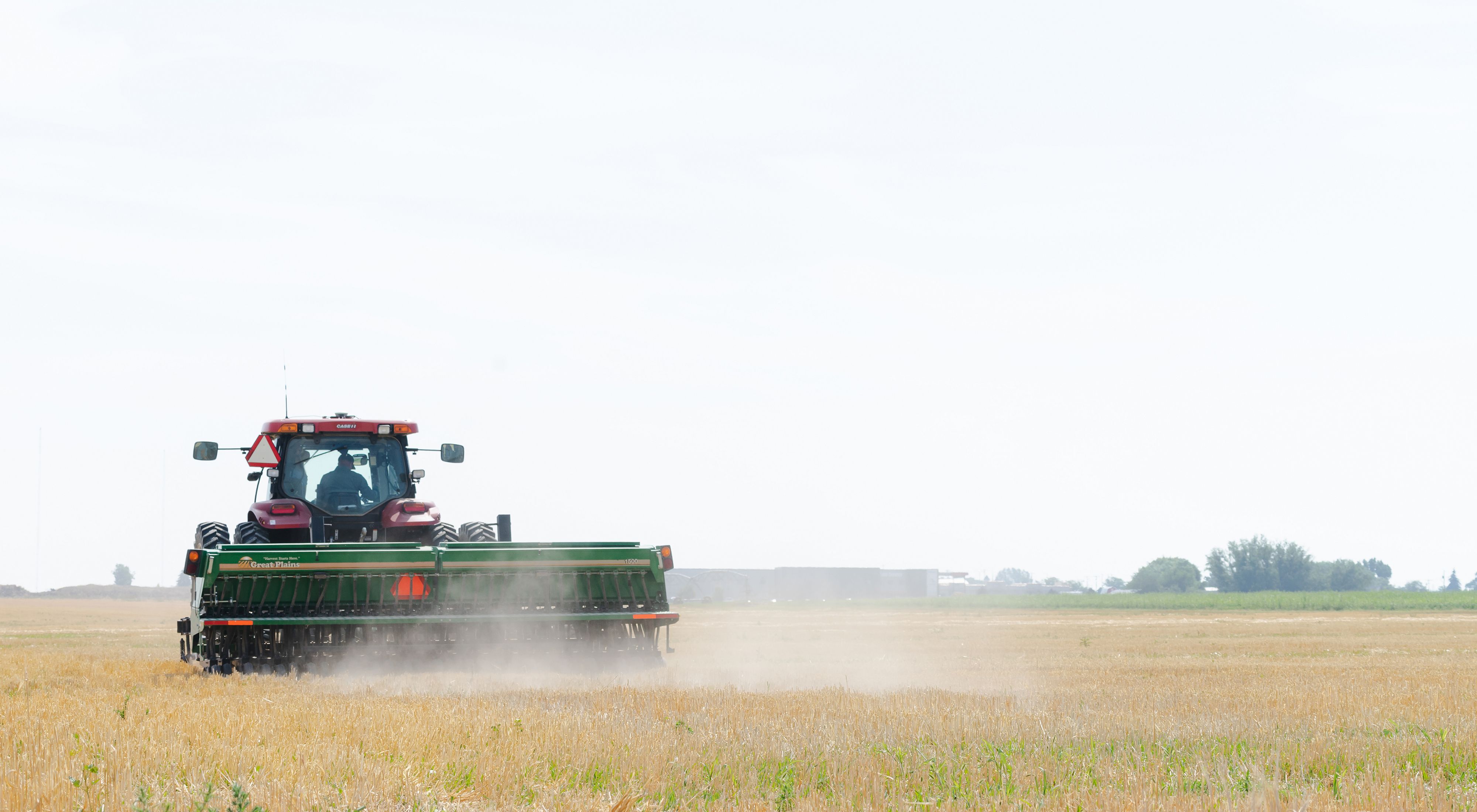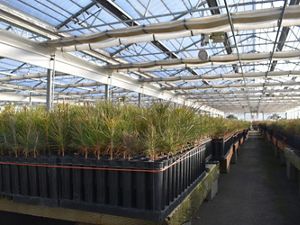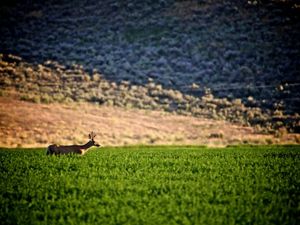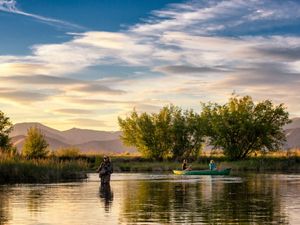Farmers Taking the Lead for a Healthier Future
Idaho farmers share stories of transforming their lands and livelihoods with regenerative agriculture.
In the face of a changing climate, more farmers are joining a growing movement to build healthier soil and more resilient water supplies using regenerative agriculture. By shifting to practices that restore nature instead of deplete it, farmers can improve yields and profits, meet increasing consumer demand and support generations of farmers to come.
In the following profiles, you will meet Idaho farmers and TNC partners who are embracing soil health practices to create a better future for their families, communities and nature.
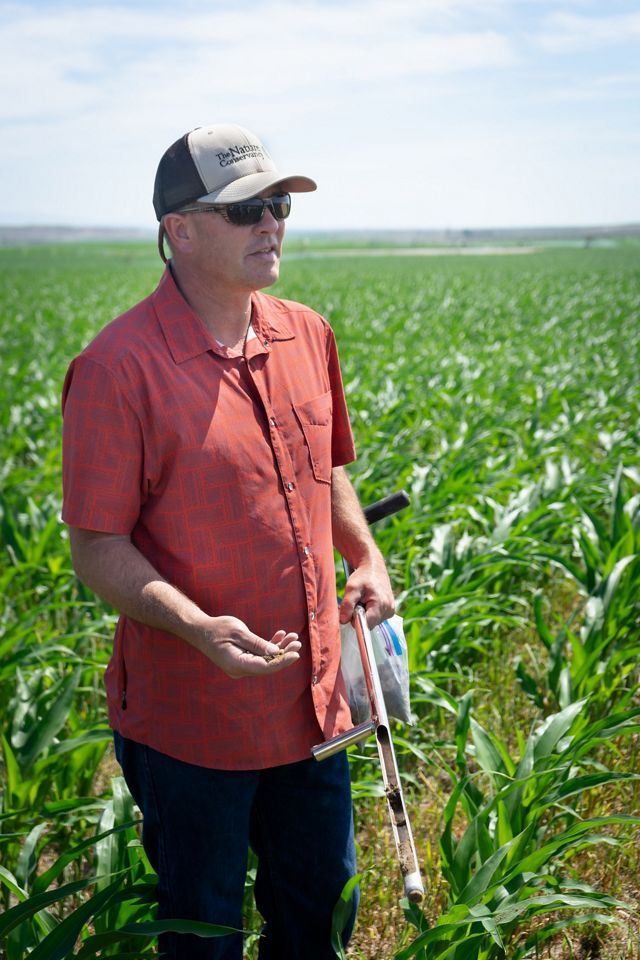
Brad Johnson
A Lifelong Passion for Soil Health
Brad Johnson, The Nature Conservancy’s agriculture strategy manager, grew up farming the same land in Tensed, ID that his father and grandfather had farmed since the 1930s. For generations, his family grew wheat, barley, peas, lentils and blue grass seed using conventional farming methods, including tillage. The tillage caused heavy erosion where soil washed out in ditches or piled up on surrounding highways.
But when Brad was 12 years old, he had an “ah-ha” moment that would change his view of farming. His father began using a no-till drill and for the first time, the erosion was gone. “We saw results that very first year,” Brad says. “Every time we no-tilled, the erosion stopped. And every time we tilled again, the erosion came back.”
Witnessing these results firsthand sparked in Brad a lifelong passion for soil health. When he worked as a ranch hand implementing no-till practices in Salmon, ID, he started learning about other regenerative techniques, like integrating livestock and crop rotation and diversity. “I began to see that soil health was a system of regenerative agriculture principles, with each practice being an essential cog in the wheel,” he says.
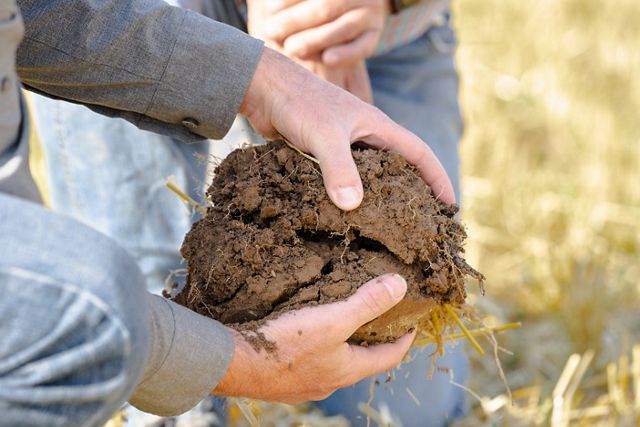
Brad joined TNC in 2019, where he now manages a demonstration farm and works directly with Idaho farmers to provide them with resources, equipment and consultation to implement regenerative agriculture practices on their own farms. And while Brad has seen a growing interest in soil health over the years, he still feels concern every time he sees a “mini-Dust Bowl” of eroded topsoil alongside fields. “Healthy soil takes a long time to build back once it’s lost. We can do substantial repair in 5 years or less if we start now.”
For Brad, the many rewards of regenerative agriculture outweigh the risks. “We get healthier food when we work with nature instead of against it,” he says. “When we use regenerative practices that mimic nature, we can increase farm income, improve the quality of life for producers and have healthier communities. We can be part of the solution to climate change and help create cleaner, more abundant water supplies.”
As a third generation farmer and soil health advocate from a young age, Brad is excited by the opportunities for agriculture and conservation to work hand-in-hand. “Supporting Idaho agriculture and soil health is my passion,” he says. “Farmers are inherently stewards of the land because it’s the basis of their livelihoods, and conservation is the key to protecting the land farmers make their living from.”
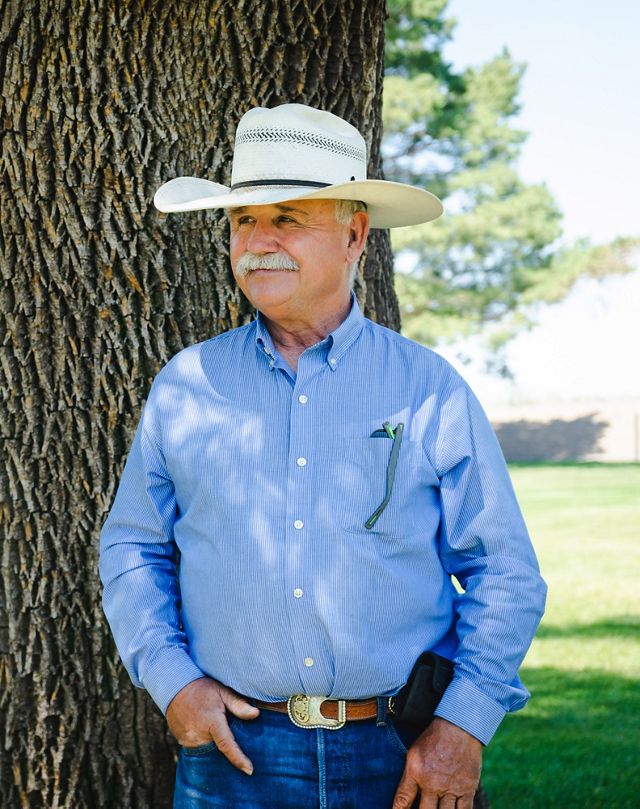
Bob Howard
Leaving the Land Better for the Next Generation
Hammett-based rancher Bob Howard does some of his best thinking in his “four-wheeled think tank,” driving along fields and pastures to check on his cattle. A longtime rancher, co-founder with the Wilsey family of Desert Mountain Grass-Fed Beef—a cooperative of ranches and farms that use regenerative farming practices—and grandfather to 12 grandkids, Bob is eager to think outside the box and learn new practices that build soil health. His reason? “I’m always thinking about my grandkids, what kind of future they’ll have,” says Bob.
Bob’s willingness to experiment is what led him to partner with a local farmer on regenerative agriculture practices in Grand View. United by a shared interest in soil health, and with TNC providing consultation support, they teamed up to create a regenerative system of farming and ranching by planting 75 acres of corn into living Timothy hay. “We’re trying new things, and we’re doing it better all the time,” says Bob.
As the Timothy grows as a cover crop, the living roots help store water, absorb carbon and promote biodiversity, resulting in a healthier landscape and watershed. After the corn is harvested, Bob's herd of 700 cattle rotationally graze the field to keep the grass in a juvenile state, ensuring the ground stays covered and maximizing the below-ground soil health benefits. The manure provides a natural fertilizer that further enhances the soil with nutrients and microbes, reducing the need for synthetic fertilizers.
The partnership provides more than just practical benefits for both farmer and rancher. Bob sees regenerative agriculture practices, including sustainable grazing, as one of the best ways to restore the health of the land—and the planet. “We’re just on the edge of what we can do—and the scary thing is what will happen if we don’t change,” says Bob.
For Bob, the learning curve of regenerative agriculture is an investment in a better future. “My hope is that 50 years from now, we will have healthy land to make a living from while feeding people locally, removing carbon from the atmosphere and restoring our land,” he says. Through his cooperative Desert Mountain Grass-Fed Beef, Bob is working to scale regenerative ranching across the West by bringing together ranching families who care about soil health and land stewardship. “These practices are good for the land, which benefits the whole of society. But for me, it all comes back to my grandkids,” says Bob. “You’ve got to leave it better, no matter how long it takes.”
Interested in learning about how regenerative agriculture could benefit your farm? Contact Brad Johnson, TNC’s agriculture strategy manager.
Make A Difference in Idaho
We are working with farmers across the state to implement partnership projects that support a healthy environment. We invite you to join the effort. Together, we can create a world where people and nature thrive.
